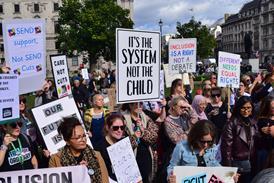An exploration of discovery
District Judge Pal Sanghera advocates some pauses for reflection in the complicated world of discovery
Disclosure and inspection of documents is governed by the Civil Procedure Rules 1998 (CPR) and practice direction 31.
It is limited to standard disclosure (CPR, rule 31.6) and the obligation to conduct a search is subject - as always - to the test of reasonableness and proportionality (CPR, rule 31.7).
Standard disclosure is defined in purely general terms but guidance is given in some of the pre-action protocols.
The personal injury protocol sets out the types of documents which should normally form part of standard disclosure for particular types of claim.
The clinical disputes protocol gives similar guidance for the disclosure of medical records.
The engineering and construction protocol, applying to cases where there are usually a large volume of relevant and irrelevant documents with consequent increased disagreement, requires the parties to 'use their best endeavours to agree: (iii) the extent of disclosure of documents with a view to saving costs.'
These are principles which can guide all decisions about disclosure.
A pause for reflection to identify the real issues in the case and what is required to prove or disprove a material point will provide ready answers as to the extent of disclosure required.
A scatter-gun approach in requesting or giving disclosure is likely to result in unnecessary costs which will not be ordered against the opposition.
A similar pause for reflection when the trial bundle is prepared can also not only save costs but also make better use of the judge's pre-trial reading time.
Disclosure statement
Standard disclosure requires a disclosure statement by the disclosing party in which he must include a certificate that to the best of his knowledge he has carried out his duty to search for, locate and disclose documents.
This certificate is reinforced by CPR, rule 31.23 which says: 'Proceedings for contempt of court may be brought against a person if he makes, or causes to be made, a false disclosure statement, without an honest belief in its truth'.
The effect of this is that the court will not readily go behind such a certificate unless there is cogent evidence that there are other pertinent documents in existence.
This was the decision of Mr Justice Colman in Henderson & Others v Overall & Others (2002) LTL, 8 April QBD.
He expressly stated 'in the face of [a party's] very clear indication that no such document exists, it is not open to this court to reject his evidence'.
Pre-action disclosure
A pause for reflection is even more important when making a request for pre-action disclosure.
Such applications are governed by CPR, rule 31.16 and must be supported by evidence.
The court can make an order only where:
l The respondent is likely to be a party to subsequent proceedings;
l The applicant is also likely to be a party to those proceedings;
l If proceedings had started, the respondent's duty by way of standard disclosure, set out in rule 31.6, would extend to the documents or classes of documents of which the applicant seeks disclosure; and,
l Disclosure before proceedings have started is desirable.
The first two clauses are straightforward.
However, the last two, merit consideration.
They received this in the Court of Appeal, in Black and others v Sumitomo Corporation and others [2001] All ER (D) 09 (Dec), (2001) LTL, 3 December.
The third clause comprises what the court referred to as the jurisdictional threshold.
Pre-action disclosure cannot extend to documents which would not be subject to disclosure if proceedings had in fact started.
Therefore, there is a need to identify at this stage the issues that will need to be resolved in any ultimate litigation.
The major, if not sole, purpose of pre-action disclosure should be to resolve issues and thereby avoid litigation rather than issue proceedings in order resolve those issues in actual litigation.
In Sumitomo, Lord Justice Rix said 'In general, however, it should in my judgement be remembered that the extent of standard disclosure can not easily be discerned without clarity as to the issues which would arise once pleadings in the prospective litigation had been formulated.' He went on to point out: 'the more focused the complaint and the more limited the disclosure sought in that connection, the easier it is for the court to exercise its discretion in favour of pre-action disclosure ...'
Once this jurisdictional test has been passed the court must proceed to consider the exercise of its discretion and assess whether disclosure is 'desirable'.
On this point also, Lord Justice Rix gave some guidance: '...
discretion is not confined and will depend on all the facts of the case.
Among the important considerations ...
are the nature of the injury or loss complained of; the clarity and identification of the issues raised by the complaint; the nature of the documents requested; the relevance of any protocol or pre-action inquiries; and the opportunity which the complainant has to make his case without pre-action disclosure.'
Note again the need to focus on the issues.
Medical records
In personal injury cases, defendants have routinely requested, claimants have supplied and, when asked, courts have ordered claimants to sign authorisations enabling defendants direct access to the claimant's medical records.
In Bennet v Compass Group UK & Ireland and another (2002) LTL, 18 April, the Court of Appeal decided that such an order should not normally be made.
The Human Rights Act was clearly in its mind.
Courts should be cautious and ensure that none of the claimant's rights was infringed.
The discretion to make such an order would only arise in carefully defined circumstances and the order should be clear as to the documents to be disclosed.
In all but the rarest of cases, medical records should be obtained by the claimant's advisers, who should control their disclosure.
Privileged documents
Disclosure of a privileged document to the judge in costs assessment proceedings does not thereby waive privilege (Giambrone & ors v JMC Holidays Ltd [2002] EWHC 495 (QB).
But be alive to the effect of costs practice direction 40.14 if you wish to retain privilege.
Any documents disclosed in error can be ordered to be returned.
But, it has to be clear to an hypothetical solicitor from the face of the documents that they are privileged and that an obvious mistake has been made, leading to their disclosure.
(Al Fayed and others v Commissioner of the Police for the Metropolis and others [2002] All ER (D) 398 QBD.
Pause for reflection? I hear a protest from busy litigators.
'Who has the time?' Make the time and you will find that you have actually saved time and costs.
District Judge Pal Sanghera sits at Coventry and Nuneaton County Courts


























No comments yet